A veteran of landmark effects films such as Blade Runner, an Oscar winner for Innerspace, and having worked on multiple Star Wars, Star Trek and Harry Potter projects (and yes, even The Twilight Saga), ILM Visual Effects Supervisor Bill George has earned his self-imposed title of "effects goon." With respected, in-demand skills that continue to evolve, Bill has moved from miniature construction to matte painting to art direction and beyond, and is now one of the most accomplished names in computer-generated effects, having earned coveted gigs such as digitally updating the title character for the 20th Anniversary Edition of E.T.: The Extra-Terrestrial.
Since joining George Lucas' best-of-the-best team at Industrial Light & Magic in 1981, Bill has worked as model shop supervisor, art director, commercial director, and now visual effects supervisor. For his most recent feature film, I Am Number Four, now on Blu-ray from Touchstone/Walt Disney, he was tasked with creating super-powered aliens, some of whom look like innocent teenagers or perhaps a dog, others who look and act like nothing we have ever seen before, which brought a host of new challenges. We here at Big Picture Big Sound were invited to join a select corps of journalists in a recent roundtable interview with Bill.
Question: How did you start out working with visual effects?
BG: I started out making models for a hobby after Star Wars came out in 1977. Two years later I got a job in L.A. building models for movies. In 1981, I got a job at ILM in the model shop working on Return of the Jedi. After that show, ILM allowed me to try new things and expand my abilities. I was lucky in that as the company grew, so did I.
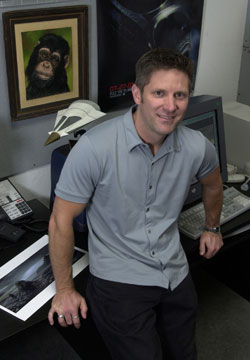
BG: I oversaw the creation of the shots involving the (giant, nasty) Piken, Bernie (the shape-shifting dog) and the stadium explosion. I was there when the backgrounds were shot in Pittsburgh to make sure that when the CG characters were added, all the pieces would fit together. I then led the team of artists here at ILM that worked on the shots and interfaced with (director) D.J. (Caruso) to get his input and feedback.
Question: How do you decide which movie you are going to work on?
BG: Our executive staff reads a script and assigns a supervisor to it who they think is best-suited for the project. Many times a studio who has worked with a specific supervisor in the past will request him or her.
Question: What was the most challenging aspect for the team when it came to the visual effects of I Am Number Four?
BG: The design of Bernie was our biggest challenge. He needed to be both aggressive and appealing at the same time. D.J. wanted him to be able to kick the Piken's ass but still have the audience go "Awww...." We revised his design a lot.
Question: What's the most fun part of your job?
BG: I love leading the creative team on a show. It's like having the best toys! There is a lot of planning that goes into a project like I Am Number Four but my favorite part is when you are on the set and things change, or the director comes up with a new idea, and you have to shoot form the hip for a solution. That flash of creative on-the-spot problem-solving is when things get really fun for me.
Question: What was the most significant factor in creating the proper imagery from the book?
BG: That was left up to our director, D.J. Caruso. It was his movie and my focus was to create the visuals he wanted.
Question: How closely did you work with him?
BG: On set the ILM team met with him every day. We kept him updated on the construction of Bernie and the Piken and I would discuss with him his plan for any of the plates we were shooting. Early on in post, we would travel down to L.A. for creative meetings and later at the end when things were super-crazy we had video reviews. Early on I told D.J. to think of Steve (the animation director) and I as the Piken. Give us direction the way you would an actor and we'll give you a performance. D.J. directed every performance from the Piken and Bernie and he seemed to be having a blast doing it.
Question: There are tons of sci-fi movies out there. What did you try to put into I Am Number Four that would separate it from all other alien films?
BG: Cute teenagers in love!
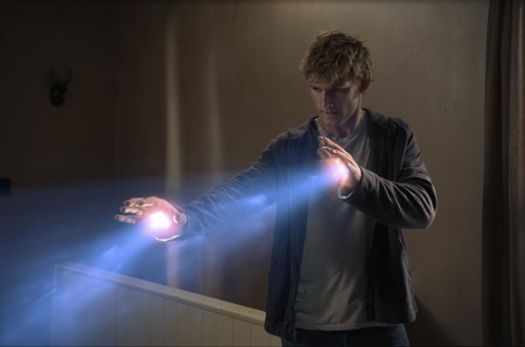
Question: Besides the digital creatures in the film we also can see digital doubles and other really spectacular effects, such as Number Six fighting against the bad guys in the high school, with her appearing and disappearing. What can you tell us about these shots?
BG: There were over 700 visual effects shots in the film. The majority of those were supervised by Greg McMurray. I supervised the sequences with the CG creatures (Piken/Bernie) and the Mog blast in the end of the film. I do know there was a huge amount of complex stunt work that went into those shots.
Question: How did you work through some challenges of CGI to make sure that the characters were always real?
BG: When we are working on our CG creature shots, they usually take a few weeks to create. During that time, our entire team views them daily as they progress. Everyone is welcome to offer their view of what is working and what needs improvement. This method really helps us to get a realistic result. It's all about observation and refinement.
Question: In this film we can see several digital creatures. What could you explain to us about these digital creatures and the shots where they appear in? What were the main challenges with them?
BG: When you are adding a CG creature into a shot, the key to its success is the interaction it has in the scene. We spent a lot of time with the cameraman lining up the shots with cut-outs of the creatures to help them compose the shots and blocking in the action so the actors got their movements right. It's important to always be looking ahead to what the final shot will look like when shooting the actors to make sure their performance will work in the shot. Things like shadows, debris and camera shake are all little factors that add up to a shot being realistic and dynamic.
Question: Is there still room for practical effects, or are there restraints that make CGI a better solution?
BG: Having come from a practical background, I love using miniatures when possible. CG effects do have the benefit of being more changeable and are more "production-friendly." If you blow up a practical miniature you only get one chance at it. If you do a CG explosion you can make changes up until the end. We really like to give the directors we work with the maximum amount of control so CG is many times the preferred solution.
Question: What was the most challenging scene to create with IMAX exhibition in mind?
BG: Good question. ILM is a tool that adapts to each director we work with. Working with D.J. and watching him film non-effects shots gave us a guide as far as what our effects shots should look like. We wanted to make something unique that would show the audience a glimpse of what (the planet) Lorian was like.
Question: What type of impact did the film's rating have on the visual effects as a whole?
BG: Very little. Never were we asked to pull back on anything like that because those types of decisions are really made in the edit.
Question: In the film we can see the transformation of the dog into the chimera and later from the chimera back into the dog. Were these particularly complicated shots?
BG: The transformation of Bernie in the car was quite a challenge. We didn't build a CG version of the dog so we had to get the "dog actor" to act mean for the lead in to the transformation. The problem was that the real dog was so dang cute! The trainer was able to train him to act aggressive--by taking away a juicy bone--but we had to shoot him against a bluescreen. We then had to shrink our "Big Bernie" CG model down to fit the real dog. That took a lot of digital pounding.
Question: What was the most dangerous scene to film and how brave were the actors?
BG: I was shocked to see Teresa (Palmer) hanging 60 feet in the air for the scene where the Piken picks her up off of the football field. She was amazing and fearless! That stunt was really impressive.
Question: How long did it take to get the right effects for the movie, and do you feel like some good ideas had to be lost?
BG: Our post-production schedule was a short three months. We had to slam out rough animation quickly so D.J. could get it in the first cut of the film. The editorial process has to be fluid because the film as a whole will evolve over time. We tried to be adaptable as possible with our shots to make the movie as great as it could be and I don't believe we compromised in any way. While the film was being shot though, we were building Bernie and the Piken and working on walk cycles and look development. We had to be ready to go as soon as D.J. turned over the sequences to us to get the movie done. Personally, I was on the show about 11 months.
Question: If you had to pick one scene that you liked the best, what would it be?
BG: I really was happy with the destruction of the Mog commander. You can see in the special features section of the Blu-ray "Becoming Number Six" how little was shot and what was added. We shot practical explosions and sparks and bombs and there is nothing more fun than blowing stuff up! When we work on our shots we don't have the final sound effects that are added right at the end and the sound design for that sequence was rockin'!
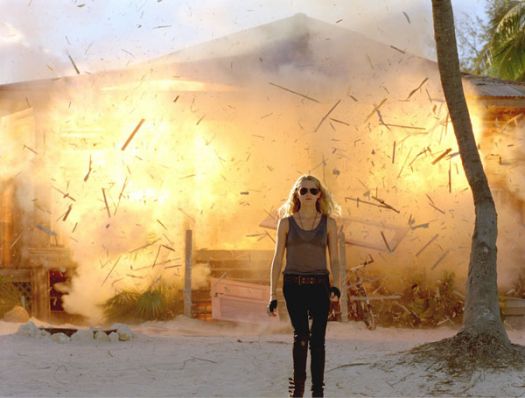
Question: Is it hard to find the right balance between CGI and "real" effects? And does the balance change for every film you work on?
BG: My approach is to always try to get as much as you can practically. At the very least you are going to be getting a good reference take. So much time is spent making a CG asset look real so if you can get something practically you can use that time elsewhere.
Question: You have a long, illustrious history in visual effects. Which film of yours are you the most proud of?
BG: Blade Runner, Innerspace and Galaxy Quest.
Question: Is there a director working today who you'd love to work with, or whose creative vision you really admire?
BG: John Waters, probably because what he does is so different from our regular genre of filmmaking.
Question: The trivia written about you on IMDb.com says: "As a teenager, he used to forage through the dumpsters outside the Van Nuys facility of Industrial Light & Magic, looking for souvenirs." Is this a true story?
BG: Yep, I still have some of the artwork, film and model pieces I got out of that dumpster. I also learned by going through their trash that the folks at ILM drank a lot of beer!
Question: So, if a teenager was to go through ILM's dumpsters today, can they still make out with cool artwork or model pieces or is everything these days shredded and destroyed?
BG: It's all shredded and destroyed and you'd probably be arrested! It was a different time back in 1978.
Question: Star Wars or Star Trek? You've been intimately involved in the creation of both universes, after all. Which do you prefer?
BG: Sophie's Choice! I love them both. Seriously, they both have their own unique charms.
Question: Was D.J. Caruso a hands-on director or did he hand you and your team the keys to the sandbox?
BG: I Am Number Four is D.J.'s movie. He gave us freedom to try different things and was very supportive of us creatively, but every shot and animation he directed.
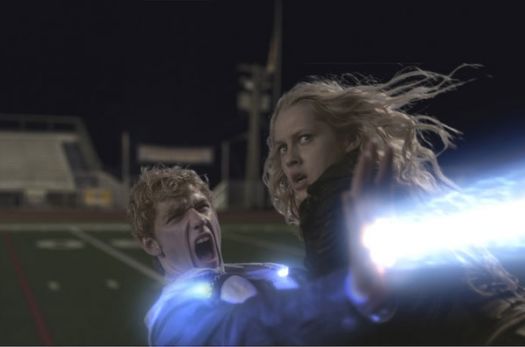
Question: With a sequel planned, did you have a variety of different effects that you wanted to keep in reserve for the next film?
BG: Nope. We went all out on this one. However, I was very excited about the idea of flashbacks where we get to see the destruction of Lorian. That was in the first script I read but was omitted. That is something I would love to see!
Question: Can you tell us what kind of projects are you involved now?
BG: I'm just finishing up the reboot of Star Tours for Disney. (The ride recently opened to the public in Orlando.) I'm really looking forward to seeing the project done. It's in 3D and has a branching storyline. I was drawn to the project for that reason, wanting to do something in 3D. The fact that a project is in 3D will inform your choices as far as composition and focus. It's a great payoff though for the extra effort. Quite a step up from the beloved original. The only bad thing will be the lines....
Question: What were your references to create the visual effects on Harry Potter and the Prisoner of Azkaban? How different was it to creating visual effects for I Am Number Four?
BG: For both of these films we looked more toward the directors than the books for guidance. Of course the books are always hovering out there, but movies are a different medium and have to stand on their own. The sparkle effect in Twilight was something that the studio did want us to match the description in the book. They didn't want all the fans to be thrown by something different than the "diamond skin."
Question: Visual effects look so much better in HD, do you watch your own films on Blu-ray?
BG: Many of them I do. Mostly I want to make sure that our effects look okay. For the older films there was a "film finish" that tends to degrade the image quality. Nowadays most all big films have a digital finish so that digital file goes directly to the Blu-ray with no loss of quality.
Question: What, in your experience, has been the movie that presented the greatest visual effects challenges and/or you're the proudest to have overcome them?
BG: One huge design challenge we faced was on Potter 3 and the Dementors... to get across emotions and intent from creatures that didn't have a face! In the long run I think that is what made them creepy. We had to rely on their body language and the action of the tattered fabric that trails off of them.
Question: Do you worry about what the critics may have to say about your movies, or do you strive to please your intended audiences?
BG: It's always nice to get positive feedback form critics but really the only people I "worry" about are the director and the producers at the studio. They hire us to create the shots for their movie and my goal is to make them happy.
Question: Number Four featured some of the best photo-realistic creatures I've seen in a while. Why do you think your creatures look so real while those in other films don't?
BG: I would say that you have excellent taste! The main determining factor in a shot's realism is how long the artist gets to refine it. Everyone uses the same basic tools but on many of the lower budget shows don't have a lot of time to polish their shots. On average we usually do about 25 to 45 takes on any shot. We also have some amazing artists who work here!
Question: How has CG evolved since you started?
BG: The concepts have remained almost unchanged. The difference is that things like match-moving that used to be super-hard have gotten easier. As machines and software get faster the shots have gotten more complex. Tools are always changing and getting more robust and our work has gotten more demanding.
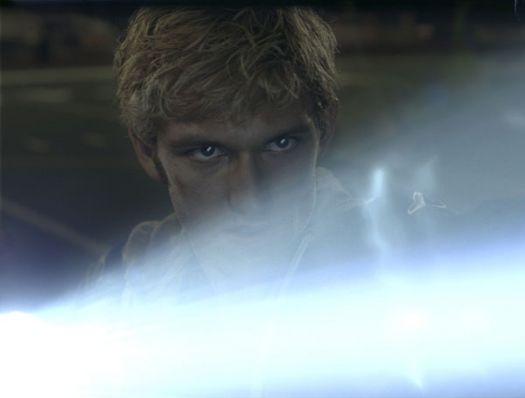
Question: We're now in an era of all-CGI. How do you react to that?
BG: The thing we used to dread hearing was "it looks like a model" Now we dread "It looks CGI". I really love working with miniatures but working with CG gives you a huge amount of control that is hard to beat. Personally, I like mixing up techniques on a show to keep the audience guessing. In the shower scene in Number Four we used both CG water and practical water shot against black.
Question: One of your specialties used to be physical models, and damned good ones: Are miniatures really obsolete in modern special effects?
BG: Sadly they are on the decline. Whenever I can I use models I will, because I think you can get a great result. But I still build models at home for fun.
Question: What is your favorite sci-fi movie? And the latest one you watched?
BG: I love 2001: A Space Odyssey. It's unmatched in its technical and artistic achievement. Thor was the last sci-fi movie I saw and thought was awesome. By the way, I usually enjoy other people's films a lot more than the ones I work on because I can just sit back and enjoy them.
Question: Who are some of your mentors and do you still consult with them very often?
BG: There have been many people who have influenced me throughout my career. By just working with these people I was able to learn so much. Dennis Muren is one of them and he is still here at ILM. On I Am Number Four Dennis viewed the shower room sequence for us with fresh eyes and gave me a lot of great feedback for making the shots look better.
Question: What's an example of something you do that's actually much harder than most people realize?
BG: I believe that most people don't realize the tremendous time and budget pressure we are under to deliver our work. People will comment "they should have done this or that," not knowing that we do have limitations. Our goal is always to maximize our artists' time, to stay on track and get the most out of the effects as possible.
Question: Any final thoughts?
BG: I Am Number Four was a really fun project to work on. D.J. has such an infectious enthusiasm that pushed us all to do our very best work. It was a real pleasure to be a part of.
Our thanks to Bill, and to Touchstone/Walt Disney Home Entertainment for making this interview possible.